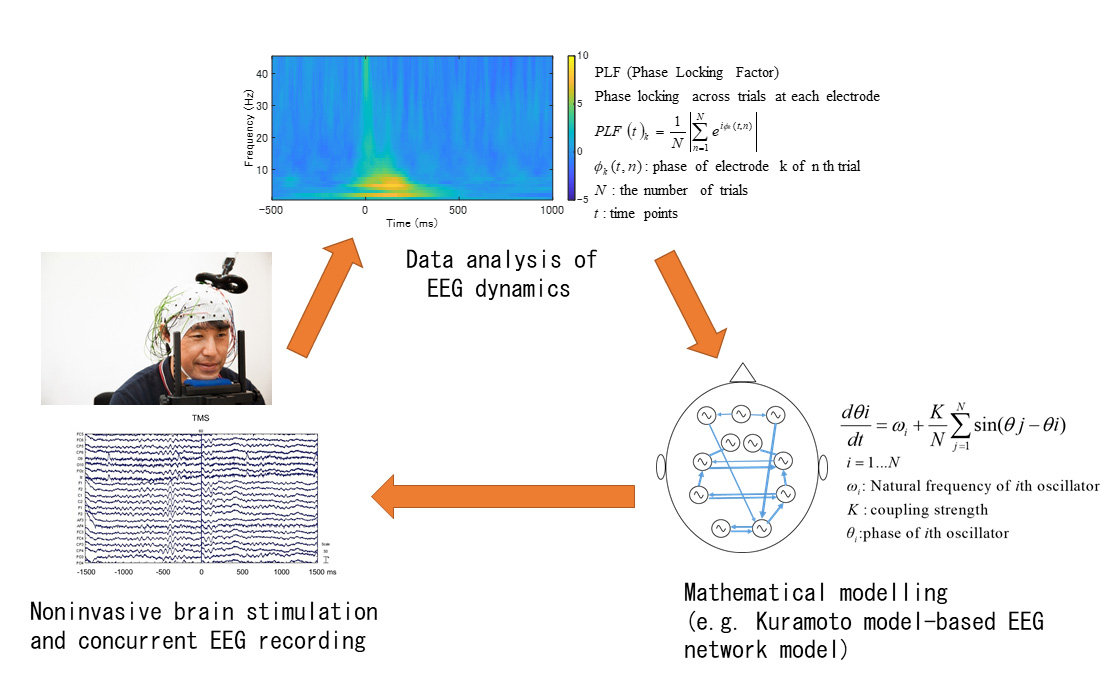The brain can be considered a complex dynamical system, composed of a number of connected nonlinear elements such as neurons and glial cells. Its activity exhibits a wide range of nonlinear dynamics. For instance, depending on the brain state, the human brain exhibits transient oscillations and synchronization at various frequency bands. We investigate functional roles of nonlinear neural dynamics such as oscillation, synchrony, metastability, and noise-induced phenomena in perception, cognition, motor, and social functions from a computational neuroscience perspective. We measure and analyze scalp electroencephalographic (EEG) signals in humans while human participants are engaged in cognitive tasks, at rest, or during noninvasive brain stimulation such as transcranial magnetic stimulation (TMS) and transcranial electrical stimulation (tES). We also analyze electrocorticographic (ECoG), magnetoencephalographic (MEG), and functional magnetic resonance imaging (fMRI) data in humans, as well as imaging and electrophysiological data in distinct modalities in animals. We promote computational studies through data analysis and data-driven mathematical modeling based on nonlinear dynamical systems theory, information theory, signal processing theory, complex network analysis, data assimilation, and statistical machine learning theory. We also collaborate with researchers to analyze clinical data for stroke and epilepsy patients, as well as persons with developmental disabilities. Our goal is to understand clinical symptoms in terms of altered neural dynamics and explore potential applications for brain-machine interfaces. Moreover, we investigate the relationships between neural dynamics and modulating factors such as autonomic nervous activity and excitation/inhibition balance in neural circuits to understand the functional roles of neural dynamics from an integrative perspective.

To understand the functional roles of neural dynamics in humans, we employ the TMS-EEG concurrent recording paradigm to measure neural activity. Next, we analyze the EEG data and apply data-driven mathematical modeling techniques to gain insights into the neural dynamics.